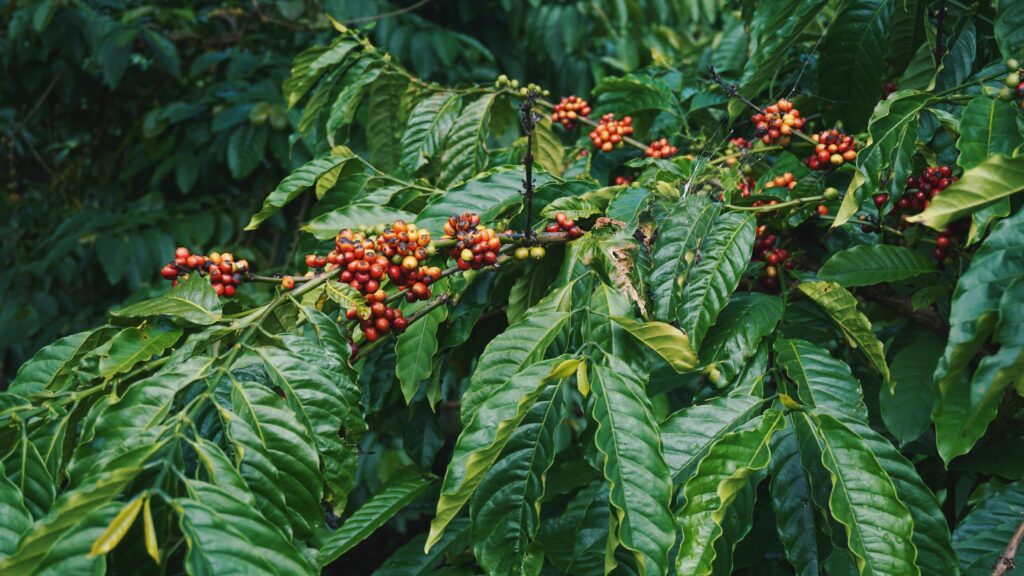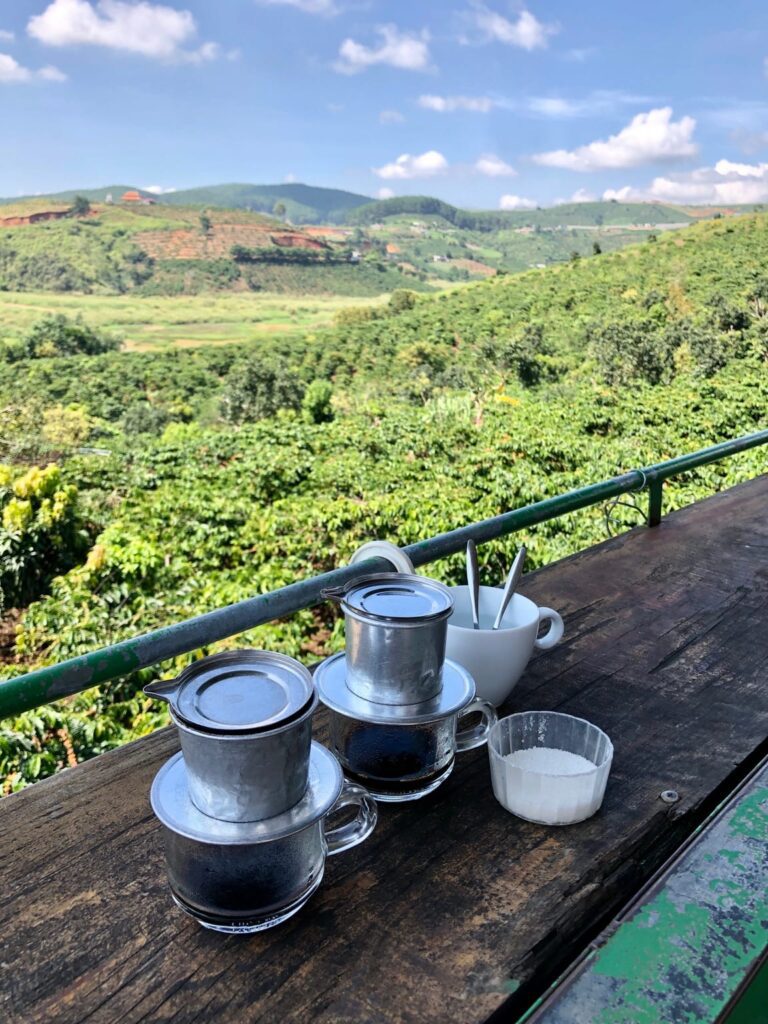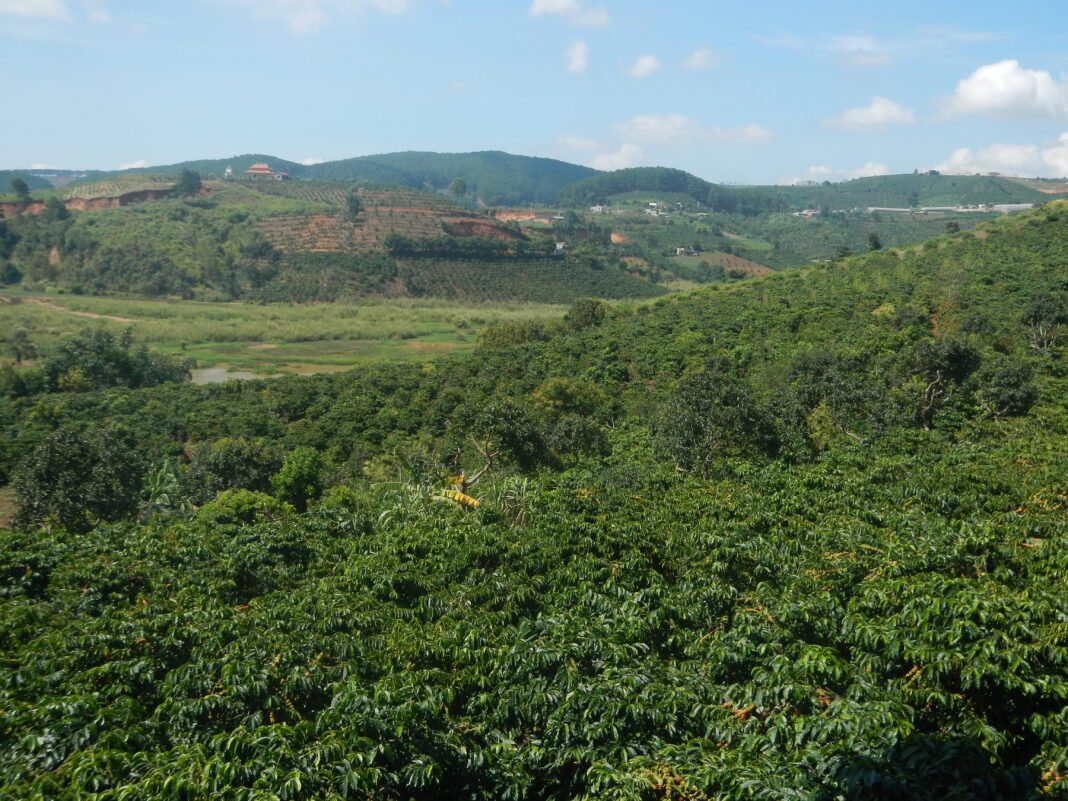GEISLINGEN/STEIGE – Vietnam’s coffee culture is special in many ways. WMF Professional Coffee Machines “Coffee culture international” focuses on Vietnam and its unique culture about coffee and how the coastal state was able to develop into the number two coffee producer in the world.
Intense flavour and extraordinary ingredients – coffee culture in Vietnam
Vietnamese citizens developed an appreciation for coffee specialities long before other countries in the region; while coffee only really became popular in China when globalisation took hold, the Vietnamese have been enjoying this invigorating warm beverage since the 19th century. Over this period, the country has developed its own unique coffee culture shaped by historic events. From Hanoi to Ho Chi Minh City, locals and tourists alike enjoy a diverse – and, from a western perspective, highly unusual – range of coffee specialities.
The innovation on the Vietnamese coffee scene has been driven in part by the fact that the south-east Asian country almost exclusively cultivates and consumes Robusta coffee. The plantations of the traditional coffee-growing countries of Latin America and Africa are dominated by Arabica variants. But the vast plantations between Laos, Cambodia and the South China Sea yield far more coffee than is needed to satisfy local demand.
In fact, Vietnam’s crops account for 20 percent of the coffee grown worldwide, firmly establishing the country as the globe’s second-largest coffee producer. So let’s take a closer look at the coffee culture of this extraordinary country.
A turbulent history
The origins of Vietnamese coffee culture can be dated with relative precision: As early as 1857, French missionaries imported the first Coffea plants into Indochina, which was part of the French Empire. However, it was not until 1888 that the country sowed its first major plantations and began to produce coffee on a larger scale.
The crops from these plantations were earmarked primarily for the French colonial officials residing in the country. Over the next few years, the plantations were expanded under the watchful eye of the Europeans, and coffee became an important export. But this period of growth came to an abrupt end when the country was occupied by Japanese forces during the Second World War and when it subsequently declared its independence from France.
After a decade of political and economic instability, the coffee industry was finally able to embark on its long journey to recovery when the Vietnam War ended in 1975. The new Socialist Republic of Vietnam nationalised all of the country’s coffee plantations and, in the mid-1980s, a programme of economic reforms was launched.
Today, small privately owned plantations are responsible for the vast majority of the country’s coffee production. Just five percent of Vietnamese coffee is grown on state-owned plantations.
Support from Germany
Germany also played an important part in the success story of the Vietnamese coffee industry. Alongside a number of agricultural development projects supported by West Germany shortly after the end of the Vietnam War, the country’s relationship with East Germany was also key to its recovery. When global market prices for coffee rose steeply in the mid-1970s, East Germany soon found itself facing supply issues.
In an attempt to resolve the bottlenecks, East German leaders and the Vietnamese government entered into a number of agreements: In exchange for half of Vietnam’s coffee harvest over a period of 20 years, East Germany would provide material development aid and share its knowledge and expertise with Vietnam on an enormous scale.
Ultimately, neither side was able to reap the rewards of these agreements. By the time Vietnam was ready for its first major harvest in 1990, the German Democratic Republic was already at the point of being confined to the history books. However, the newly reunified Germany continued to import large amounts of Vietnamese coffee, and Germany is still its largest coffee customer.
Robust plants for high yields
Today, Vietnam is the second-largest producer of coffee in the world, after Brazil. Unlike the traditional “coffee countries” of Colombia and Ethiopia, Vietnam focuses on Robusta varieties, which account for around 97 percent of the beans harvested in the country. For the growers, this is a sensible choice: the plants are significantly less demanding and easier to care for than Arabica, which means that their owners are guaranteed higher yields with less effort.
However, the bitter taste and high caffeine content of Robusta coffee makes it a less popular choice with baristas and consumers in the west; outside Vietnam, it is primarily used to bulk out blends, in instant coffee or in industrially manufactured products. But locals love the intense flavour and nutty, chocolatey notes of Robusta beans, and use them in a wide range of exciting coffee creations.

A tradition of extraordinary creations
The diverse coffee specialities available in Vietnam are usually based on a filter coffee prepared using traditional Vietnamese methods. The coffee is brewed using a special metal filter placed directly on top of the cup or glass. As the beans and their exceptionally dark roast produce a very strong coffee, the beverage is often served – especially to tourists – with hot water to dilute it.
But the method of preparation is not the only way in which Vietnamese coffee culture sets itself apart: It also uses some rather unusual ingredients. For traditional “Cà phê sữa đá” Vietnamese iced coffee, the freshly brewed coffee is poured into a glass of ice-cold condensed milk. In some speciality coffee shops, the refreshing drink is now also served with dark-roasted Arabica beans, which produce an elegant flavour with fruity notes. The version of the drink without condensed milk, Cà phê đá, contains nothing but coffee, ice and a little sugar and is also usually drunk ice-cold as a way to cool off in the country’s typical hot weather.
Condensed milk is used in many Vietnamese coffee specialities because its sweetness helps to balance out the bitterness of the coffee and because it can be stored unrefrigerated for long periods of time. Condensed milk is also found in “Cà phê trứng”, or “egg coffee”, where it is mixed with egg yolk and sugar to make a foam that is poured directly on top of the coffee. Other ingredients that Europeans may not expect to find in coffee include yoghurt, butter and coconut milk.
A quality offensive with a global impact
These traditional methods of preparation and unique creations are still the main hallmarks of Vietnamese coffee culture. However, the country’s coffee scene has also adapted under the influence of foreign tastes and global trends; the metropolis of Ho Chi Minh City in particular is home to an abundance of modern cafés and coffee shops with stylish interiors and a cool, relaxed vibe.
At these locations, a new generation of Vietnamese coffee enthusiasts expects coffee produced to the very highest standards of quality from bean to cup. In response, coffee producers have begun to place greater emphasis on Arabica varieties such as Bourbon, Typica and Moka, which have a much more dynamic flavour profile than the robust Catimor plants that previously dominated the few Arabica plantations in Vietnam. But this higher quality comes at a price for the grower – the plants require more care and attention to cultivate to maturity.
And while all this is going on, other populations of coffee lovers are slowly developing a new appreciation for the complexities of the Robusta bean. Vietnamese baristas in Europe and the USA are bringing the intense flavours of their home country to the international coffee menu.
Compact fully automatic machines dominate the market
Global machine manufacturers such as WMF Professional Coffee Machines also have a key role to play in the changes taking place on the Vietnamese coffee market. While small cafés and mobile street sellers continue to focus on the traditional filter method or compact portafilter machines, the country’s countless convenience stores primarily use fully automatic machines.
Since 2013, WMF has been selling its machines in Vietnam via retail and service partner “Epicure”, which has offices in three of the country’s largest cities – Ho Chi Minh City, Hanoi and Đà Nẵng. Since entering the market, the WMF 1100 S has become the most popular model by some margin. This compact and powerful machine with two grinders and a simple milk system meets the requirements of most Vietnamese customers.
Engineers adapt the machines to cater to the preferences of local consumers – to create a beverage of the desired strength, the machine needs to grind at least 20 grammes of beans and brew the coffee twice. Larger fully automatic machines, such as the WMF 1500 S+ and the WMF 5000 S+, are found almost exclusively in hotels.

Sustainable success for the future
A promising future lies ahead for Vietnamese coffee culture. The country’s unique coffee specialities are increasingly gaining international attention and becoming firm favourites of coffee enthusiasts all over the world.
Vietnamese beans, too, are now held in high esteem; the newly cultivated Arabica varieties are proving popular, and westerners are slowly starting to appreciate the intense flavour profile of Robusta coffee. In terms of numbers, Vietnam established itself as a major player long ago: In spite of shipping container shortages and high freight costs, which are currently bringing import figures down somewhat, the country has managed to maintain its position as the world’s second-largest coffee producer.
By focusing primarily on Robusta plants, growers enjoy consistently high yields even if the climate is less than favourable. And with a steady flow of customers waiting to purchase their goods – especially in Germany and the USA – there is nothing standing in the way of sustainable growth and a successful future for the Vietnamese coffee industry.
About WMF
WMF, which is short for Württembergische Metallwarenfabrik, is a leading premium provider of household products, professional coffee machines and hotel equipment. WMF stands for innovation based on tradition and provides convincing engineering and design “Made in Germany”.
Under the WMF, Silit and Kaiser brands, the company offers products for preparing, cooking, eating, drinking and baking for use at home. Business customers, in particular from the restaurant and hotel industry, have access to product ranges for coffee preparation, as well as the set table and buffet under the WMF, Schaerer, Curtis and Hepp brands.
WMF is represented with its products in over 120 countries and has more than 6000 employees. In Germany, Austria and Switzerland, but also in the rest of Europe and worldwide, e.g. in China, WMF operates a total of around 350 of its own shops. The company was founded in 1853 in Geislingen an der Steige and has been part of the French Groupe SEB since the end of 2016.
















